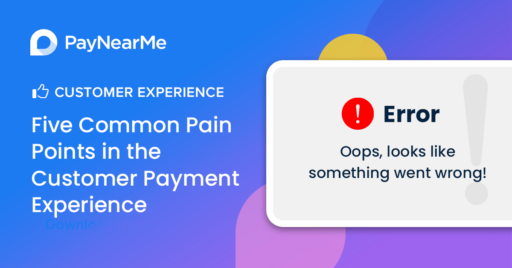So, you want to start a payments company?
This article originally appeared on VentureBeat
if I made a nickel every time someone said “payments is hot,” I could fund a lot of startups.
Like moths to a flame, that “heat” is perhaps why so many entrepreneurs are drawn to payments. Some of these innovators will build successful companies that blaze like wildfire, but my hunch is that many won’t make any money at all — simply smoldering and then fading to ashes.
Based on my experiences with Accept.com — one of the first P2P payments companies — which Amazon acquired in 1999, and PayNearMe, a company we’ve been building over the past five years, I wanted to share my thoughts about the current challenges and opportunities that payments entrepreneurs face.
Where’s the opportunity?
Today, the new opportunities to make money are not in payments processing but in leveraging technology to get around the incumbents’ lock on distribution or scale. The most successful businesses use payments as the “excuse” or “hook” that gives them permission to solve other hard problems that customers are willing to pay for.
To start, I’ll make this assertion: Payments want to be free.
Why? Because it’s hard to charge much, if anything, for simply making a ledger entry that “moves” funds from one account to another, and at some level, that’s what payment processing is. The emergence of cryptocurrencies like Bitcoin will further drive this reality home.
To date, the only way to make money processing payments without wrapping them in other valuable services has been to achieve the kind of mind-blowing scale that Mastercard, Visa, First Data, JPMorganChase, and a handful of other companies have built over the past 50 years.
However, I want to be clear that the “desire” for payments to be free doesn’t mean there isn’t plenty of profit to be made around payments.
What’s the problem?
Examples of hard problems in card-based payments include extending credit, acquiring and serving consumers or merchants, and absorbing the risk of fraud. Because the traditional markets for these “problems” are dominated by giant players — many of whom are merging for even greater scale — much of the recent innovation in the card industry has involved the expansion or automation of distribution to new classes of merchants (e.g. folks like Square, Stripe, Braintree, WePay serving SMBs, or WEX in specific verticals like fleet management).
Among the techland crowd, some of the potential addressable markets they serve (or adjacencies they can eventually reach) are massive, so huge companies could be built — but they will require significant time and/or capital.
In remittances (aka “International Money Transfer”), the hard problems include building cash-in and cash-out networks around the globe, underwriting receivables from those networks, assisting consumers, and managing money laundering and other compliance risks in a wide range of jurisdictions within and across countries — 48 in the U.S. alone, for instance.
As the remittance industry has matured, margins have fallen, and the walk-up business has consolidated around a few well-known players that include Western Union, MoneyGram, and Euronet’s Ria. Innovation in remittances has involved hard-to-execute distribution plays like replacing cash-in networks with bank accounts (e.g. Xoom) or focusing on specific use cases such as cross-border tuition payments (e.g Peer Transfer).
Despite massive awareness and optimism, cryptocurrencies like Bitcoin won’t by themselves revolutionize remittances unless — or until — far-side merchants accept those currencies directly and thus render the need for cash-out networks moot. If that happens, the entire remittance industry will be turned on its head. But, even if that happens, cash-in or bank-in networks will still be needed to convert fiat currencies into cryptocurrencies in the originating countries while complying with local regulations. Those are hard problems for which some business will be paid, probably for a long time.
In the market for closed-loop gift cards (e.g the classic “Bed Bath and Beyond” card you see in the check-out lane), the hardest problems involve retail distribution, which is is typically locked up in hard-negotiated exclusive relationships by companies like Blackhawk Network, privately-held Incomm, and Euronet’s ePay subsidiary. These companies then leverage their retail contracts into exclusive relationships with “content” providers (merchants like Bed Bath & Beyond whose brands appear on the cards), and vice versa. Innovation, again, has revolved around the creation of new distribution channels, typically by replacing physical cards with digital facsimiles, as was done by Gyft, which First Data recently acquired.
You can’t work against them, so work around them
Consider how Uber “gives away” payments to unlock margin in transportation and logistics, or how retailers “give away” payments to unlock margin on product sales. Sure, retailers would love to reduce their 2-3 percent card processing costs. But if accepting cards lets them grow their top-line revenue by an additional 20 percent, that incremental revenue growth on gross margins dwarfs the 2-3 percent they are paying to Visa, Mastercard, and others. No one other than Walmart, Walgreens, and a handful of their peers has any hope of achieving a reduction in interchange fees. And that, by the way, is the underlying dynamic that allowed the card networks to start in the first place!
My advice? Don’t try to “out-Visa” Visa or the other scale players by fooling yourself into believing you can deliver a regulatory-compliant payment service with acceptable customer service while operating sub-scale at a discount to the massive incumbents.
Instead, look for new markets that can be unlocked by processing payments as a “hook,” and make your margin there. If you get stuck, look for new distribution channels, like Xoom and Gyft have done, or explore specific use cases that you can build a service around, the way Peer Transfer has done.
The bottom line: If you’re drawn to payments, think about using them to unlock other sources of margin because, to paraphrase Willy Sutton, that’s where the money is.




